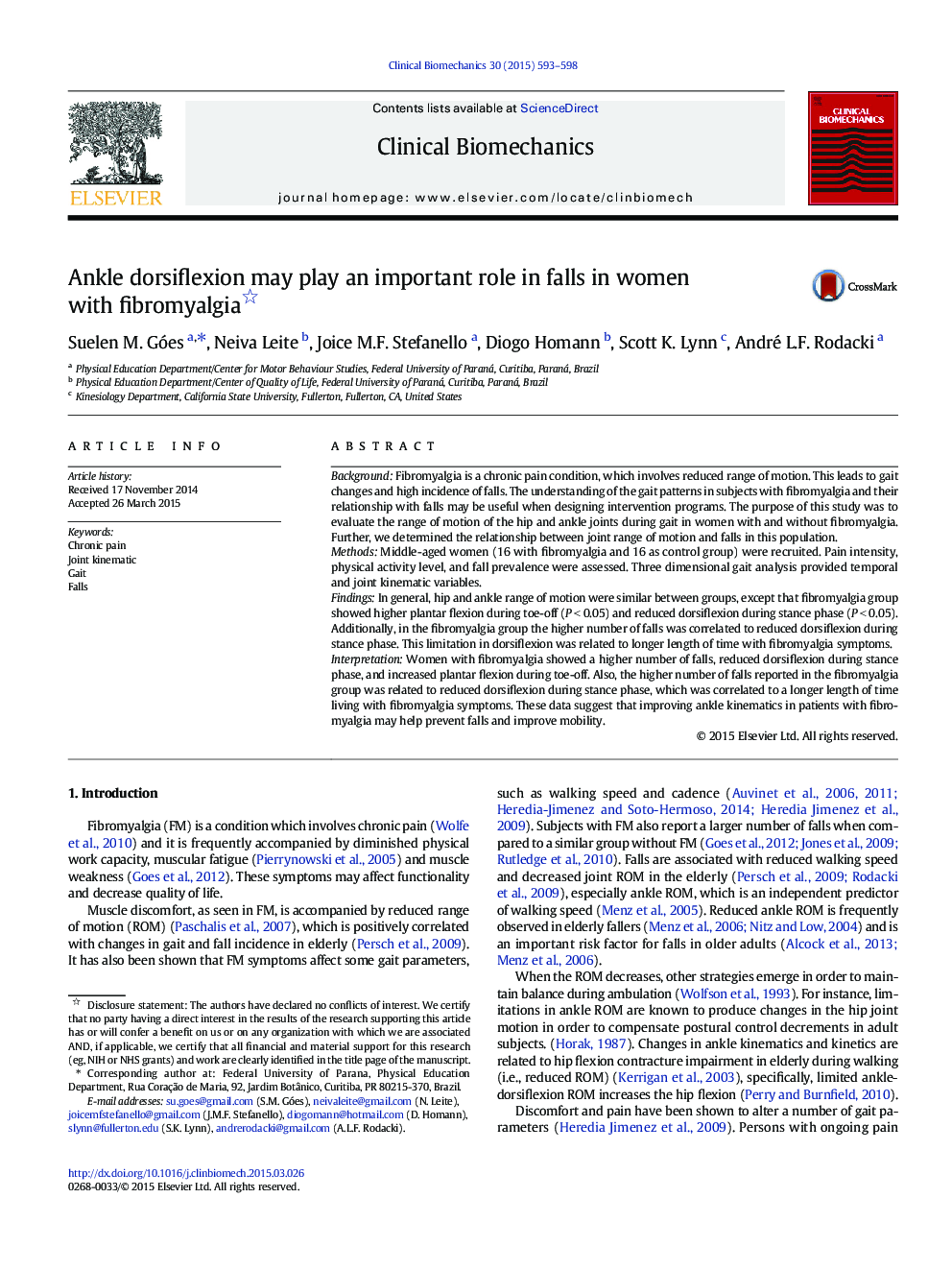| Article ID | Journal | Published Year | Pages | File Type |
|---|---|---|---|---|
| 4050243 | Clinical Biomechanics | 2015 | 6 Pages |
•Women with fibromyalgia showed reduced ankle dorsiflexion during stance phase and increased plantar flexion during toe-off.•High number of falls was correlated to reduced ankle dorsiflexion during stance phase.•Reduced ankle dorsiflexion during stance phase was related to longer length of time with fibromyalgia.•Interventions designed to increase ankle dorsiflexion range of motion may be beneficial for individuals with fibromyalgia.
BackgroundFibromyalgia is a chronic pain condition, which involves reduced range of motion. This leads to gait changes and high incidence of falls. The understanding of the gait patterns in subjects with fibromyalgia and their relationship with falls may be useful when designing intervention programs. The purpose of this study was to evaluate the range of motion of the hip and ankle joints during gait in women with and without fibromyalgia. Further, we determined the relationship between joint range of motion and falls in this population.MethodsMiddle-aged women (16 with fibromyalgia and 16 as control group) were recruited. Pain intensity, physical activity level, and fall prevalence were assessed. Three dimensional gait analysis provided temporal and joint kinematic variables.FindingsIn general, hip and ankle range of motion were similar between groups, except that fibromyalgia group showed higher plantar flexion during toe-off (P < 0.05) and reduced dorsiflexion during stance phase (P < 0.05). Additionally, in the fibromyalgia group the higher number of falls was correlated to reduced dorsiflexion during stance phase. This limitation in dorsiflexion was related to longer length of time with fibromyalgia symptoms.InterpretationWomen with fibromyalgia showed a higher number of falls, reduced dorsiflexion during stance phase, and increased plantar flexion during toe-off. Also, the higher number of falls reported in the fibromyalgia group was related to reduced dorsiflexion during stance phase, which was correlated to a longer length of time living with fibromyalgia symptoms. These data suggest that improving ankle kinematics in patients with fibromyalgia may help prevent falls and improve mobility.
